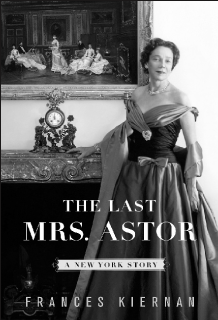By Sarah Norris
Her path encompassed an upbringing in the United States, China and the Dominican Republic. Of her childhood, Brooke Russell, an only child, reminisces in the book, “I heard things that I did not understand and I saw things that made no sense. As a result, I became quite sophisticated and absurdly innocent — a rather ridiculous combination.”
An abusive marriage at seventeen to Dryden Kuser, from whom she filed divorce in Reno after eleven years, resulted in the birth of her son. A second marriage, to Charles “Buddie” Marshall, was by all accounts a loving one. Perhaps motivated by the downturn of her husband’s investments in the mid-1940s, Astor went to work as a features editor at House and Garden magazine in New York.
In 1952, after twenty years together, Marshall died very suddenly, leaving his wife in a precarious financial situation. Astor was circumspect about the stress she must have been under, but within her social circle, friends expressed concern about what would become of “poor little Brooke.” Less than a year after Marshall’s death, however, Astor, “the little sister of the rich,” shocked her friends by marrying Vincent Astor, heir to a great American fortune.
One of the book’s most interesting accounts tells the story of how the couple met and became engaged: It was at the insistence of Vincent Astor’s then-wife, Minnie, who didn’t wish to leave her husband until he was settled with another woman, thereby securing a substantial divorce settlement. “Of course she married Vincent for the money,” said Brooke’s close friend Louis Auchincloss. “I wouldn’t respect her if she hadn’t. Only a twisted person would have married him for love.” Widely known for having a very difficult personality, Vincent Astor was the son of John Jacob Astor IV, who, while having his last drink aboard the Titanic, is rumored to have said, “I asked for ice, but this is ridiculous.”
After six years of marriage, Vincent Astor died, leaving Brooke in charge of the Vincent Astor Foundation. She focused its direction on improving the lives of New Yorkers, and, for the better part of four decades, Astor was at the helm of a great vehicle for change in all five boroughs. Among her favorite causes were The New York Public Library, The Metropolitan Museum, and the Bronx Zoo, and, in 1998, Astor was bestowed with the Presidential Medal of Freedom for her charity work.
Replete with 24 pages of photographs, “The Last Mrs. Astor” marks a fascinating era of American — and New York — history. Astor was the author of two memoirs, but what makes this book different is its textured inclusion of her friends’ opinions and stories. Kiernan, a longtime editor at The New Yorker, met Astor herself in 1999 and makes clear in the introduction that she holds her subject in high regard. The great tragedy of Astor’s legacy is, of course, the seeming disregard with which she has been treated by her son and his wife.
Last fall, Astor’s close friend Annette de la Renta was appointed as her guardian, and, especially after becoming acquainted with the details of her life, it is impossible to think of Brooke Astor without tipping one’s hat to her generosity towards the city of New York.





































